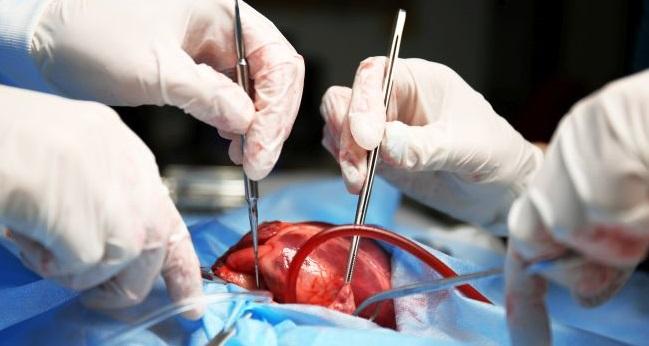Meta-analysis Supports Surgical LAA Occlusion During Cardiac Surgery, but Flaws Found
Experts agree that methodological limitations muddy interpretation of the findings.

Surgical occlusion of the left atrial appendage (LAA) improves clinical outcomes in patients undergoing cardiac surgery, a new meta-analysis suggests. But, experts say, methodological limitations complicate what can be taken away from the findings.
In pooled results from 10 observational and randomized studies, LAA exclusion was associated with lower risks of all-cause mortality and ischemic stroke/systemic embolism but did not seem to influence risk of postoperative A-fib.
Richard Whitlock, MD, PhD (McMaster University, Hamilton, Canada), commenting for TCTMD, said the definitiveness of that conclusion takes the evidence too far, especially considering the extensive deficiencies seen in the meta-analysis, which was published online recently in the American Journal of Cardiology.
Whitlock cited several issues, including the lack of registration of the analysis on a site like PROSPERO; the fact that some relevant studies, such as this one published last year in Clinical Cardiology, were not included; errors in the reporting of some data (which Ibrahim explained as a misunderstanding over what the odds ratios indicated); and the pooling of data from both observational and randomized studies.
In addition, the researchers did not include an assessment of the quality of the evidence. Had they done so, their conclusion likely would not have been as strong as it is, Whitlock said. “The paper has got a very black-and-white conclusion, and I think that’s definitely overstating what the evidence is.”
Still, this is a hot topic and people are anxiously awaiting randomized data to inform how surgical LAA occlusion is used in practice in patients undergoing cardiac surgery, said Whitlock, who is heading the 4,812-patient LAAOS III trial. He said he hopes those results will be available sometime next year and should provide insight into the best treatment approach, noting: “We need to establish really definitive data as to what we should be doing for these patients when they have their chest open and they’re having cardiac surgery. This meta-analysis does not further that cause.”
Other experts agreed, with one commenter saying that the fact another relevant study based on the Society of Thoracic Surgeons (STS) Adult Cardiac Surgery Database—the largest tackling this issue to date—was not included in the meta-analysis was a “fatal flaw.”
Asked why that study was left out, Ibrahim explained that certain types of studies, including those using STS data, were excluded from the meta-analysis “to avoid duplication of data.”
The paper has got a very black-and-white conclusion, and I think that’s definitely overstating what the evidence is. Richard Whitlock
Surgical exclusion of the LAA has been proposed as a way to lower risks of stroke, systemic embolism, and all-cause mortality in patients already undergoing cardiac surgery, and the strategy is commonly deployed in practice despite the dearth of high-quality evidence supporting its use.
In this meta-analysis, Ibrahim et al pooled data from 10 prior studies that included a total of 6,779 patients who underwent surgical LAA occlusion during cardiac surgery and 6,573 who had cardiac surgery without LAA occlusion. Primary operations included CABG and mitral valve or aortic valve repairs.
The main results showing lower risks of all-cause mortality and ischemic stroke/systemic embolism with the addition of surgical LAA occlusion and no difference in postoperative A-fib were largely consistent when looking at incidence rate ratios (IRRs) instead of odds ratios, although the mortality difference fell short of statistical significance.
Outcomes With vs Without Surgical LAA Occlusion
|
|
OR (95% CI) |
IRR (95% CI) |
|
All-Cause Mortality |
0.74 (0.55-0.99) |
0.76 (0.57-1.00) |
|
Ischemic Stroke/Systemic Embolism |
0.66 (0.52-0.83) |
0.54 (0.36-0.80) |
|
Postoperative A-fib |
0.75 (0.40-1.40) |
0.87 (0.61-1.23) |
Even so, the findings show that occlusion “is at least comparable, if not beneficial, in terms of all-cause mortality,” the authors say. “Thus, it supports the safety of performing [occlusion] in patients undergoing cardiac surgery.”
Commenting for TCTMD via email, Xiaoxi Yao, PhD (Mayo Clinic, Rochester, MN), said the findings were not surprising given the fact that most of the patients came from one study, for which she was the lead author.
“I am a little concerned about the validity of the study given the questions I have,” Yao said. “However, assuming that the study was done correctly, I think the clinical implication would be that left atrial appendage occlusion might be a reasonable option for patients with atrial fibrillation undergoing cardiac surgery. However, this will need to be confirmed in future RCTs.”
Sorting this out will be important, Whitlock said, because there is wide variation in practice. Some surgeons perform additional LAA exclusion routinely, whereas others avoid it due to concerns about potential harm. Some surgeons, Whitlock noted, believe removing the LAA increases the risk of ongoing heart failure. He said he doesn’t do it routinely but will exclude the LAA in selected cases—in patients with A-fib, elevated stroke risk scores, and an absolute contraindication to long-term oral anticoagulation, for example.
“My hope is that this works,” Whitlock said. “But I could be very wrong, and I don’t want to expose patients to unnecessary harm without the appropriate evidence.” He added that he thinks substantial strides will be made in the next 2 to 3 years in terms of evidence supporting both percutaneous and surgical LAA occlusion.
The investigators acknowledge in their paper that “further randomized trials are needed with long-term follow-up to evaluate the clinical benefits of LAA occlusion.”
Todd Neale is the Associate News Editor for TCTMD and a Senior Medical Journalist. He got his start in journalism at …
Read Full BioSources
Ibrahim AM, Tandan N, Koester C, et al. Meta-analysis evaluating outcomes of surgical left atrial appendage occlusion during cardiac surgery. Am J Cardiol. 2019;Epub ahead of print.
Disclosures
- Ibrahim reports no relevant conflicts of interest.


Comments